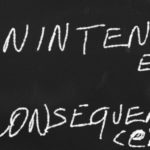The joy of movement can’t come if you’re standing still.
I was sitting in a restaurant in Seward, Alaska, trying to decide between a bowl of fish [large or small] and something that looked vaguely like a steak sandwich when it hit me. Maybe it was the tufted and pleated naugeyde booths, maybe it was the yellow tinted water glasses, maybe it was the cast of characters sitting at the bar, I don’t know. But it hit me that I was in a place that had no forward momentum.
Not that there should be. After all, at that time of year, in June, the sun never really sets, so there doesn’t seem to be a need to get anything done by any particular time. It’s not like you need to be finished with anything “before it gets dark”. It never gets dark. So even though the clock is ticking, there’s no sense at all that time is passing. Not in minutes or days or even years. And in this place, even decades were going by unnoticed.
It’s easy enough to imagine how tempting it is to live a life without momentum. If time stands still, so does everything else. We don’t age, we don’t change, we don’t encounter anything new. What we are is what we were and probably what we’ll be. I know the symptoms well. I lived with them for many years. I eased myself into every new decade of my life with as little change as possible. And like Seward, I clung to the past as a way of forecasting the future.
But time can’t stand still, not for cities, not for people. The relentless passage of hours and days leads inevitably to years going by with or without our acquiescence. In my case, like so many others I’m afraid, when I stopped growing up I started growing out. What began as simple indiscretions with food and drink became irrevocable habits of an unhealthy lifestyle. What started as a way to liberate myself from the pressure of life became the shackles that kept me from living. The added weight of my body was just more obvious than the unbearable weight of my soul.
So when I began running, the act of moving was more important than stride length and foot strikes. The movement of my body reflected the movement of my spirit and that’s what mattered most. More than speed or distance it was the movement that I craved.
Old habits gave way to new ones. Old addictions which were killing me yielded to a new addiction to getting on with life. And becoming healthier on the outside helped me find the strategy I needed to become healthier on the inside. As I lost pounds I gained confidence. And the farther I went, the farther I felt I could go.
Some new runners misunderstand the difficulties they encounter at first. They attribute their fatigue and soreness, or even injury, to the running. They’re missing the point. The fatigue is from all the years of not running, of not moving, and of not doing anything that created any kind of momentum. They’ve stood still for so long that movement seems strange and painful.
Worse yet, some new runners allow themselves to believe that the fatigue and soreness will go away if they stop running. It won’t. It won’t because it can’t. It won’t because ultimately the pain of not moving is so overwhelming that we can’t move at all. The absence of momentum leads directly to an absence of feeling and the presence of a kind of numbness from which pain becomes a welcome diversion. That pain can take many forms, from overwork to overplay, but the result is always the same.
It’s only when movement becomes the most natural state in our lives that we can finally begin to enjoy the motion. It’s only when standing still becomes impossible that we can finally embrace the kind of changes that are inevitable in our lives. And it is only when running, in and for itself, becomes the one part of lives that we can’t do without that we can experience the joy of becoming ourselves. It’s then, and only then, that we begin to truly running for our lives.
Waddle on, friends.








